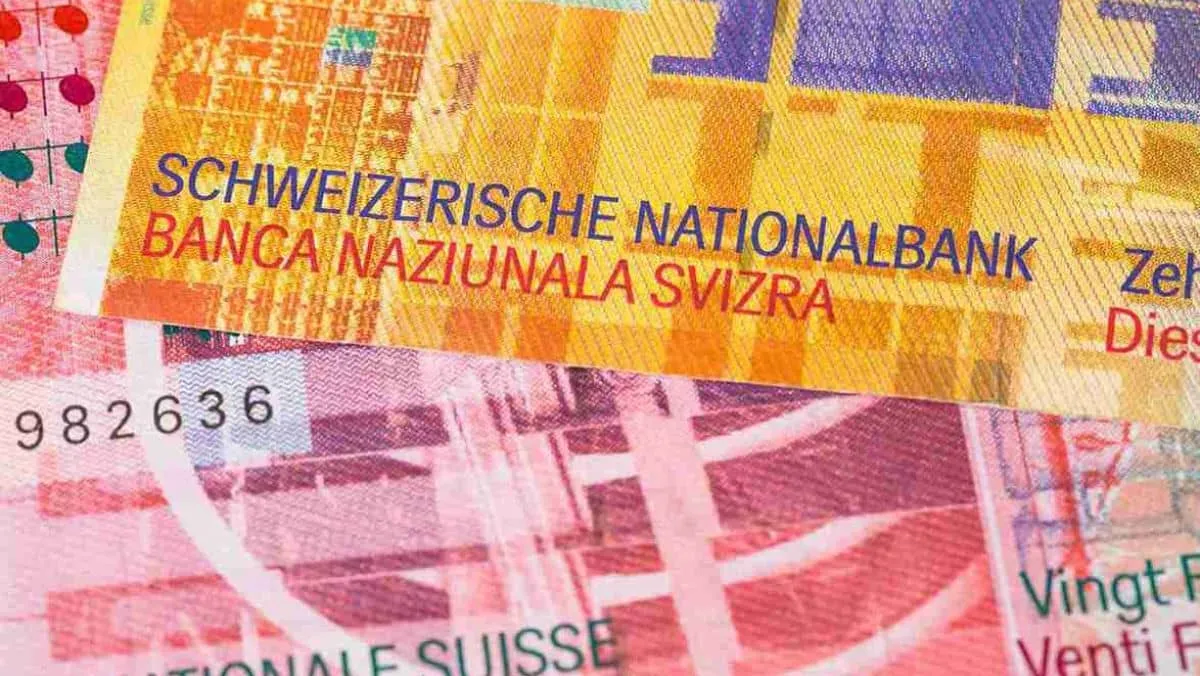
Thursday Jan 25 2024 05:08

10 min

Fluctuations in currency exchange rates reveal much about underlying economic conditions and relationships between countries. Staying on top of these fluctuations is essential for companies doing international business, individuals investing globally, or tourists planning trips.
In this article, we’ll analyze trends for the exchange rate between the Swiss Franc (CHF) and the US Dollar (USD) in recent months.
The CHF to USD weekly exchange rate between the Swiss Franc (CHF) and the US Dollar (USD) from November 5th, 2023, through January 21st, 2024, shows an overall trend of the CHF strengthening compared to the USD.
In November, the CHF to USD exchange rate started at 1.1073 to 1 on 11/05, based on the week’s closing rate.
By the end of November 11/26, the closing rate had climbed to 1.1502 CHF per USD. This represents an appreciation of the CHF vs the USD of nearly 4% in November. Both the highest and closing rates each week progressively increased over this period in November.
Through most of December, the CHF continued strengthening against the USD. The closing exchange rate peaked on 12/24 at 1.1878 CHF to 1 USD.
It was the strongest level for the CHF to USD over the entire period. However, at the end of the year on 12/31, the closing rate had dipped slightly to 1.1762 as the CHF retraced some gains.
December saw high volatility between the weekly highs and closing rates.
So far in January, the overriding trend has been some weakening of the CHF to USD rate. The closing rate on 01/07 was 1.1729 CHF per 1 USD and declined further to 1.1509 by 01/14.
As of 01/21, the exchange rate is 1.1518 CHF to USD. This level represents more stabilization over the last couple of weeks in January after the gyrations both up and down from November through early January.
You might also like to read: Observing The USD To ZAR Conversion Rate
As with any financial asset, currency values respond to the prevailing market mood.
Investor sentiment moves based on analysis of variables impacting the near-future performance outlook for countries and regions worldwide.
Here are the reasons that fueled the CHF rally versus USD:
Nonetheless, any extended currency uptrend almost invariably encounters periodic turbulence. The same goes for even the strongest, highest-quality currencies like the Swiss franc trading against dollars.
Read this article for more insights: 5 Mistakes to Avoid in Forex CFDs Day Trading

While forecasting precise short-term movements between forex cross pairs is invariably tricky, we can still set expectations for likely scenarios over the coming months.
Swiss safe-haven appeal intensified as global recession fears heightened towards the end of 2023. When market uncertainty strikes, the Franc’s reliable traits position it well as investors reassess risk amid fragile business and consumer health.
Although Switzerland faces several concerns, such as high living costs and ageing demographics, its currency should retain some insulation from external crises relative to peers.
At some point, the bearishness of the USD risks exhaustion after its protracted selloff. Signs point towards moderating inflation in the US economy even as labour conditions and spending activity show resilience.
If its valuation slide reverses, this combination could form a base underneath the dollar. When the global reserve currency bounces back, CHF gains often fade.
Of course, major political, economic, and natural disruptions contain the potential to alter presumed trajectories. Changes in the outlook for growth, inflation, monetary policies, business/investor confidence, and geopolitics influence currency markets.
Rare or unexpected occurrences could undermine projections for the Franc, Dollar, or other currencies.
Give this article a read: Dollars To GBP Exchange Insights You Need
Stop-loss orders allow you to specify the price at which you want to exit a trade to limit potential losses.
This tool is essential in a volatile market, where prices can swing rapidly against your position. Set your stops to lock in profits or limit downside based on risk tolerance.
Consider lowering the amount of capital you deploy into each trade. Smaller position sizing gives your trades more breathing room during volatility. You’ll lose less on losing trades while still keeping profits on winners.

Volatility creates choppy price action with many false breakouts and whipsaws.
If extremely high volatility lowers predictability, stand aside until it calms.
Be patient and disciplined, waiting for higher probability setups. Jumping into bad trades will only lead to frustration.
Hedging means taking a secondary market position to mitigate losses on your primary exposure.
Since currencies tend to move in tandem, pick a positively correlated pair and go long or short accordingly to balance out your book.
Expand your knowledge with this write-up: How to Develop a Forex CFD Trading Plan
While analyzing currency exchange rate trends can reveal valuable insights, forex trading also carries significant risks that traders should fully understand.
Before putting capital at stake in the global foreign exchange market, develop a risk management plan that employs stop-losses, prudent position sizing, and patience during high volatility.
Consider hedging highly correlated currency pairs to offset exposures.
Most importantly, continue learning about fundamental economic conditions influencing exchange rate fluctuations.
Learn and trade with markets.com: The ultimate trading community!
“When considering “CFDs” for trading and price predictions, remember that trading CFDs involves a significant risk and could result in capital loss. Past performance is not indicative of any future results. This information is provided for informative purposes only and should not be considered investment advice.”
